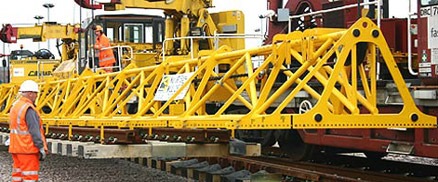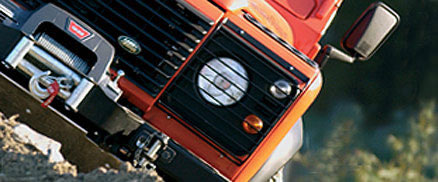September 2nd, 2010
Inspecting your fall arrest harness may seem a tiresome activity but should be an essential part of your routine
Break up the inspection into these steps
Check the “label”
- Confirm that the “label” has an individual serial number
- Confirm that the “label” has a valid inspection date and there were no reported problems
- Confirm the manufacturing date is present and that the harness does not exceed the five year working life*
Hardware check
Check condition of rear “D” Ring for:
- Distortion
- Fatigue/Rust (Excess of 15% surface coverage: rule of thumb, if you can rub the rust off between thumb and forefinger then it is unacceptable)
- Cracking
- Burrs
- Nicks
- Excessive Wear
Check plastic back plate, Fasteners, Web tidies, Adjusters and Connectors for:
- Excessive wear
- Cracks
- Damage
- Discolouration
Software check
- Hold the harness up by the shoulder straps and ensure that the webbing hangs evenly
- Connect buckles and ensure harness is not distorted and hangs correctly
- Check webbing for signs of UV (Colour fading is a good indication of UV damage and is easiest to identify when comparing to a new harness)
- Check webbing for signs of Chemical damage (Staining is a good indication of Chemical damage and can be identified if the harness appears brittle or hardened)
- Check Condition of webbing by running through thumb and forefinger
in all cases software, must be free from: -
- Cuts
- Fraying
- Excessive Abrasion
It is worth noting that proper care and cleaning of a fall arrest harness is just as important as the inspection itself.
Care:
- Store in a clean, dry place away from direct sunlight
- Do not use a drying room to dry webbing products
- Do not stand on a harness when donning/removing
- Do not use marker pen or solvents
- Clean using non biological detergent at a low temperature
Cleaning:
- Before an inspection make sure equipment is clean.
- Wash in warm soapy water with a sponge and hang to dry naturally.
- Never expose to heat and never use a drying room.
Posted in Arbil Lifting Gear |
July 28th, 2010
When using slings you should be familiar with the safe use of slings. Slings should only be used by trained operatives who understand the methods of rating and application of mode factors:
<!– /* Font Definitions */ @font-face {font-family:”MS Mincho”; panose-1:2 2 6 9 4 2 5 8 3 4; mso-font-alt:”MS 明朝”; mso-font-charset:128; mso-generic-font-family:modern; mso-font-pitch:fixed; mso-font-signature:-1610612033 1757936891 16 0 131231 0;} @font-face {font-family:”\@MS Mincho”; panose-1:2 2 6 9 4 2 5 8 3 4; mso-font-charset:128; mso-generic-font-family:modern; mso-font-pitch:fixed; mso-font-signature:-1610612033 1757936891 16 0 131231 0;} /* Style Definitions */ p.MsoNormal, li.MsoNormal, div.MsoNormal {mso-style-parent:”"; margin:0cm; margin-bottom:.0001pt; mso-pagination:widow-orphan; font-size:12.0pt; font-family:”Times New Roman”; mso-fareast-font-family:”MS Mincho”;} @page Section1 {size:595.3pt 841.9pt; margin:72.0pt 90.0pt 72.0pt 90.0pt; mso-header-margin:35.4pt; mso-footer-margin:35.4pt; mso-paper-source:0;} div.Section1 {page:Section1;} –>
- Good slinging practice must ensure that the load is as safe and secure in the air as it was on the ground and that no harm is done to the load, lifting equipment, other property or persons.
- Establish the weight of the load, ensure the lifting method is suitable and inspect the sling and attachments for obvious defects. Prepare the landing area making sure the floor is strong enough to take the load. Follow any specific instructions from the supplier.
- Ensure the lifting point is over the centre of gravity. Any loose parts of the load should be removed or secured. Secure the sling firmly to the load by hooks onto lifting points or shackles etc. The sling must not be twisted, knotted or kinked in any way.
- Use packing to prevent damage to the sling from corners or edges and to protect the load.
- Do not exceed the SWL or rated angle. Any choke angle must not exceed 120° and any basket 90°.
- Do not hammer, force or wedge slings or accessories into position; they must fit freely.
- When attaching more than one sling to the hook of the appliance use a shackle to join the slings and avoid overcrowding the hook.
- Use an established code of signals to instruct the crane driver.
- Ensure the load is free to be lifted and not, for example, bolted down.
- Check that there are no overhead obstacles such as power lines.
- Keep fingers, toes etc clear ensuring they do not become trapped when lifting, lowering or controlling loads.
- Make a trial lift by raising the load a little to ensure it is balanced, stable and secure and if not lower it and adjust the slinging arrangement.
- Where appropriate use tag lines to control the load.
- Except where special provision is made, do not allow anyone to pass under or ride upon the load. The area should be kept clear.
- Make a trial set down, ensure the sling will not become trapped and the load will not tip when the slings are released. Use supports which are strong enough to sustain the load without crushing.
- Never drag slings over floors etc or attempt to drag a trapped sling from under a load.
- Never use a sling to drag a load.
- Place the hooks of free legs back onto the master link and take care to ensure that empty hooks do not become accidentally engaged.
- Never use slings in contact with chemicals or heat without the manufacturers approval.
- Never use damaged or contaminated slings.
- On completion of the lift return all equipment to proper storage.
Establish the weight of the load, ensure the lifting method is
suitable and inspect the sling and attachments for obvious
defects. Prepare the landing area making sure the floor is
strong enough to take the load. Follow any specific
instructions from the supplier.
Posted in Arbil Lifting Gear |
June 22nd, 2010
MTK Series tractors require less air, making them less expensive to operate. They’re designed for use with any hoist, or even alone to push, pull, or position loads on beams.
- Up to 6 metric ton towing capacity
- Interchangeability with MLK Series and HLK Series parts
- Balanced gear package and air motor provide speeds from slow creep to 165 fpm
- Million-cycle performance tested air motor with spring-loaded vanes provides instant starting and slow speed control
- Heat-treated planetary gearing assures longer life and reduced maintenance
- Self-adjusting, spring-applied, non-asbestos disc brake is air-released for smooth starts and stops
- Drive tire is made from extremely durable polyurethane material with a temperature rating of 185° F for excellent adjustable gripping characteristics
- Tight turning radius of 30”
- Universal solid cast-iron wheels fit both flat and tapered beams
- Wheels can be greased for longer life
- Standard tractor fits 2.7” – 6.3” beam flange widths
- Roller guides made from high alloy steel keep tractor running smoothly
- Tractor operates with a full-flow pendent, enhancing load-spotting control
- Standard 7’ pendent length
- Tow bar included with tractor
Options available
- Free wheel kit that permits moving of tractor without supplying air; attaches directly to tractor without modification
- Wide flange kit fits 6.27 – 12” beam flange widths
- Pull chain operation
- Bronze wheels for spark-resistant applications
- Gasket repair and manual brake release kits
- Drawbar hitch kit
- External brake release kit relieves auto disc brake without running tractor
Posted in Arbil Lifting Gear |
May 23rd, 2010
Shackles are used in lifting and static systems as removable links to connect (steel) wire rope, chain and other fittings. Screw pin shackles are used mainly for non-permanent applications. Safety bolt shackles are used for long-term or permanent applications or where the load may slide on the pin causing rotation of the pin. Chain or dee shackles are mainly used on one-leg systems whereas anchor or bow shackles are mainly used on multi-leg systems.
Van Beest offers a wide range of bow and dee shackles, depending on the application on which the shackle is going to be used; the range stretches from Working Load Limit (WLL) 0.33 tons to 1500 tons. Van Beest offer an extensive range to choose the shackle exactly suitable for the application. Most of the shackles are directly available from stock. Furthermore, shackles can be supplied to many standards such as the US Federal Specification RR-C-271, EN 13889, British Standard 3032, DIN 82101, DIN 82016 etc.
Polar shackles are for use in extreme climatic conditions with material properties guaranteed up to temperatures of -40oC, and furthermore we offer a wide range of general commercial shackles, which are not suitable for lifting but merely for fixing purposes.
All Van Beest shackles have a specific design for a specific application. Examples are the “Super” shackles which are made out of grade 8 steel enabling the dimensions of the shackles to be minimized for use in limited space conditions, without loss of functionality or Working Load Limit. Or sling shackles for use with large slings, to provide a better radius to the sling being used. Another example of functional design is the use of shackles where the pin has a square sunken hole so as not to obstruct the use of fishing nets. These are all examples of a highly functional design, to optimize the use of the Van Beest shackles in daily use.
Shackles supplied by Van Beest can be either hot dipped galvanized, electro-galvanized, painted or self coloured, depending on the type of shackle and its application.
Posted in Arbil Lifting Gear |
May 7th, 2010
Polyester roundslings are widely used in industry. They are:
- very lightweight and flexible
- gentle to the load they are carrying
- high strength
- have a long life
All roundslings are manufactured to EN1492-2:2000 standard and are constructed from high tenacity polyester yarn. Roundslings are very easy to use. All roundslings are colour coded to give easy identification on the safe working load. They come labelled, giving length and safe working load. The inner core of the roundsling is made from high tensile polyester fibre which is wound continuously without a join to provide maximum possible strength. The core of the sling is protected by a tough woven tubular sleeve also made from polyester without a side stitch. This serves to protect both the inner core of the sling and the surface of the product when lifting. The low stretch characteristics of the polyester yarn also prevents ‘load bounce’ when lifting heavy loads. One advantage of round slings is that they are unaffected by sunlight, humidity and grease and can be used in a multitude of lifting applications.
Consideration should be given to the required working load limit when using roundslings. The shape, size and weight of the load, together with the intended method of use, working environment and nature of the load are all important factors. The slinging lifting and lowering operation should be planned before commencing the lift. The selected sling should be both strong enough and of the correct length for the mode of use.
When using roundslings the following should always be adhered to:
- Slings should never be dragged from under loads.
- Never knot or twist a sling.
- All slings should be inspected before use by a competent person.
- Use only slings with a reference number traceable to a test certificate.
- All steel fittings connected to the sling should be smooth and free of sharp edges and of such dimensions as not to tear or overload the eye.
- Never attempt to repair slings, if in doubt withdraw from service and consult the supplier or manufacturer.
- Avoid snatch or shock loading.
- Avoid contact with heat and hot surfaces.
- Never trap a roundsling under a load as crushing can seriously damage a sling
Posted in Arbil Lifting Gear |


